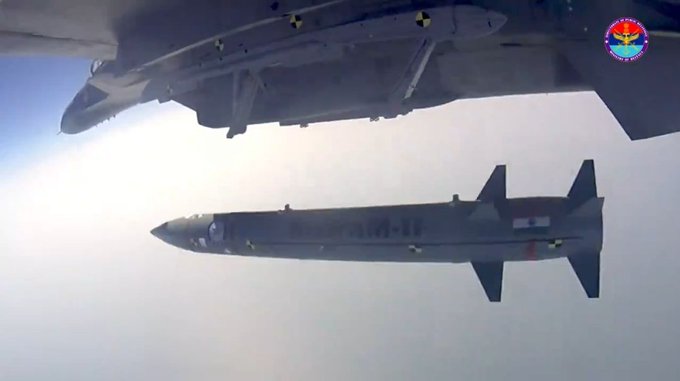SOURCE: AFI


India’s Defense Research and Development Organisation (DRDO), in collaboration with the Indian Air Force (IAF), is preparing for a series of critical weapon trials using a specially modified Su-30MKI fighter jet. This modified testbed will be used by the Aircraft and Systems Testing Establishment (ASTE) to conduct combined trials of DRDO’s advanced air-launched weapons, including the Rudram-1, Rudram-2, Rudram-3 anti-radiation missiles, and the Long-Range Glide Bombs (LRGB).
This testbed will enable DRDO to evaluate the performance of the Rudram missile series and the LRGB, both in terms of aerodynamics and weapon integration. The Su-30MKI’s ability to simulate various flight profiles and engage in combat scenarios makes it an ideal platform for testing advanced air-launched systems.
The Rudram family of missiles, developed by DRDO, is designed to neutralize enemy radar and air defense systems, giving India a formidable tool in suppressing enemy air defenses (SEAD).
Rudram-1 is India’s first indigenous anti-radiation missile, capable of targeting enemy radar installations from long distances of 150km. It uses a passive homing head to detect and lock on to enemy radars and communication systems, making it highly effective in disabling enemy defenses before a strike.
Rudram-2 is a Bigger version of Hypersonic Missile that was recently tested by the DRDO with an enhanced range of 350km and precision capabilities. Rudram-2 will come in two versions: One for anti-radiation missions to target enemy radar systems and another for ground attack purposes. he missile can be launched from altitudes between 3 kilometres and 15 kilometres to destroy enemy radar positions, carrying a payload of up to 200 kilograms. Rudram-2’s capabilities are more advance because of the addition of an imaging infrared (IIR) system.
Rudram-3 is the most advanced in the series, with an even greater range of 550km and a more sophisticated guidance system. The Rudram-3 is the third and most powerful missile in this series. This missile will be a two-stage one like the Russian Kinzhal.
The first stage will act as a booster, while the second stage will feature a dual-pulse motor. The missile will weigh approximately 600-700 kilograms and carry a 200-kilogram warhead with a range of 550 kilometres. The missile features 16 control surfaces, making it very agile. There are 8 control surfaces in the middle and another 8 at the rear, making it highly maneuverable. Control surfaces on a missile are movable parts that help guide and stabilize the missile’s flight.
Alongside the Rudram series, the Long-Range Glide Bombs (LRGB) are also being tested. LRGBs are designed for precision strikes on stationary targets from standoff distances, giving the Su-30MKI a deep-strike capability without exposing the aircraft to enemy air defenses.
With ranges of up to 100 km or more, these bombs can be released from the safety of Indian airspace or from positions far from enemy air defenses, enabling strikes on key installations like ammunition depots, fuel storage facilities, and command centers.
LRGBs are equipped with advanced guidance systems, including GPS and INS, ensuring high precision. DRDO’s indigenous development of these bombs reflects India’s growing self-reliance in advanced weaponry.
By testing these systems together, DRDO can ensure the Su-30MKI’s ability to carry out complex, multi-role missions, such as destroying enemy radar and air defense systems (using Rudram missiles) and striking strategic ground targets (using LRGBs), all in a single sortie.
The trials will also assess the combined operational effectiveness of these weapon systems in real-world conditions, including their ability to evade enemy radar and jamming attempts, maintain target accuracy, and deliver high lethality.